The dry cleaning industry is dying, which makes this antiquated industry ripe for disruption.
There’s no clear market leader, but million-dollar mega-companies like Washio, FlyCleaners and Cleanly tried becoming the convenient laundry-tech service for busy people, raising millions of dollars.
In the end, they failed.
But the industry’s slow death can’t be blamed on one cause or one company.
Between the disconnect of the industry’s roots and today’s modern technology; an aging out population and work from home becoming the norm, dry cleaners have been hanging on by a thread for a few years now, but it’s become more evident and shutdowns now seem inevitable.
But it wasn’t always like this. And, maybe, if things were done differently, it wouldn’t have gotten to where it is today.
But everything starts from somewhere.
For dry cleaning, it all began in 79 AD in ancient Rome when they used ammonia (urine) and dirt (dry sand).
Jean-Baptiste Jolly, a Frenchman, is credited for discovering modern dry cleaning in 1845 when he accidentally dropped kerosene on a dirty tablecloth and the stains disappeared.
But it was actually Thomas L. Jennings, an African American, who made the breakthrough. He was awarded a patent in 1821 for his discovery of a process called dry-scouring, the forerunner of modern drycleaning.
The heart of the industry wasn’t born until immigrants came to the United States, building a community centered on cleaning other people’s delicate clothes.
Immigration and Entrepreneurship
Balanzat came from the Philippines to the United States when she was four years old.
Like many other immigrants, she told Slice of Culture she wanted a better life. She pursued entrepreneurship and saw an opportunity in laundry and dry cleaning.
Her grandmother was a single mother of five children, taking on hard jobs and making lots of sacrifices in a place like the Philippines where opportunities are scarce.
She emphasized that her hunger and desire for success stems from that. Being born into scarcity gave her an “insatiable appetite for life,” she said.
And that appetite for life was realized in her entrepreneurial adventures, which led to the launch of JULIETTE in 2014.
She added that they’ve been thriving ever since and that’s because JULIETTE is not just any cleaner, setting her sights on becoming category leader, which meant offering more than just cleaning clothes.
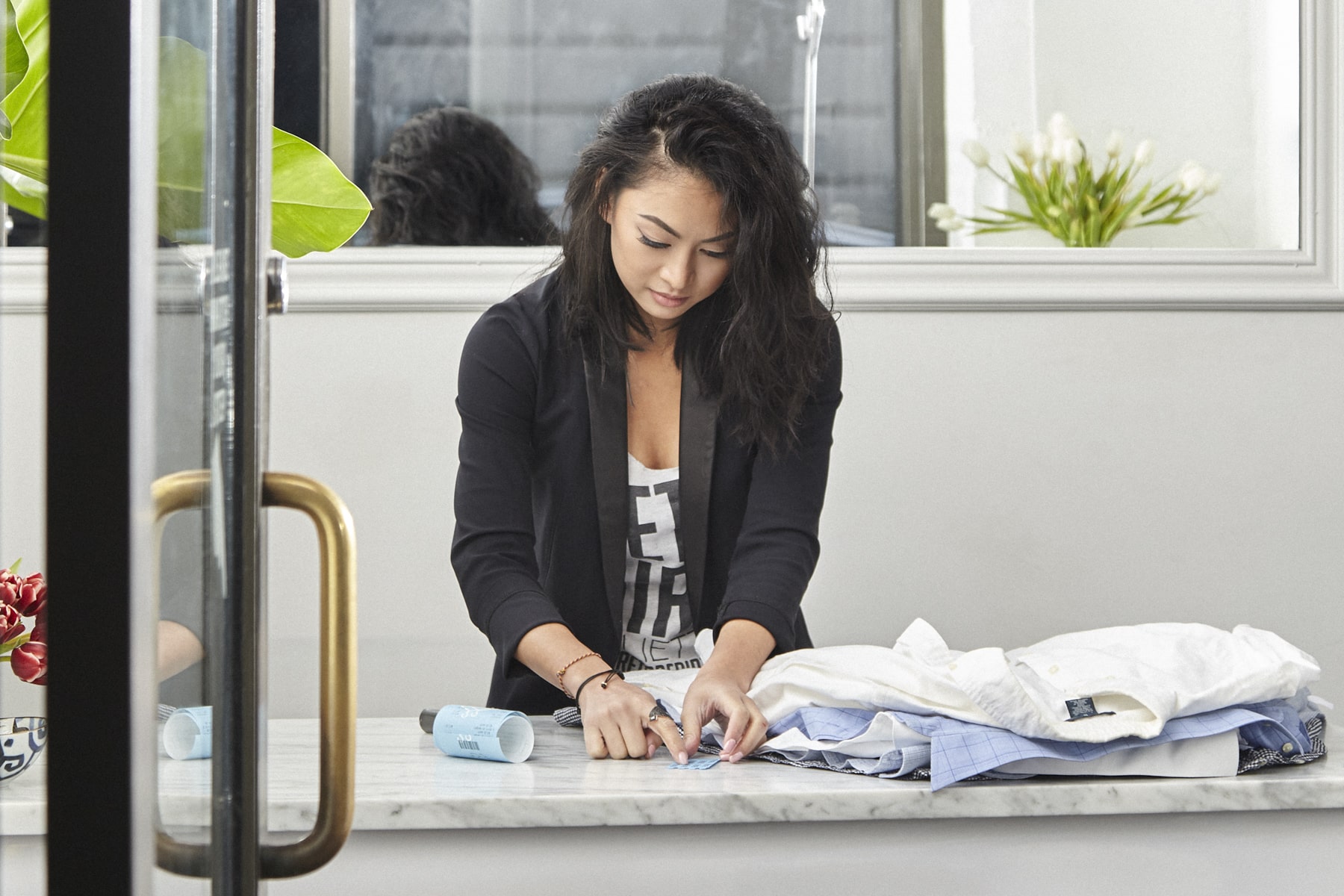
And here’s one day, when they did much more than that.
“My friend, Amber, was heading to Philip Lawrence’s wedding — the right-hand man to Bruno Mars. She needed a same-day turnaround for her vintage 70s dress for the big event, and in just a few hours, it was done,” Balanzat explained.
She got on a first-class plane ride, but right after she landed and made her way out the airport, she realized she forgot her dress— her couture chloe sequin gown. Sobbing, she asked the taxi driver to bring her back to LAX airport and called the airline frantically, hoping her dress wasn’t lost.
Airports are notorious for losing clothes, but Amber’s dress was recovered because of a black velvet hanger, black JULIETTE branded bag and — most importantly — her name on the bag.
“She told me this story, and it just reinforced what I want JULIETTE to be all about. We can be there for so many more people.
“But I learned I’m not the only one who feels this way. Many immigrants share my same story — my same hunger for success,” she added.
In the late 1970s, a huge wave of Koreans immigrated to the United States, specifically New York City, Chicago and Los Angeles. Because of language barriers, lack of education and certifications, these immigrants found themselves taking over what was once owned mainly by the Jewish and Italians — dry cleaners.
For these Koreans and a majority of other immigrants, it was more simple to share transferable skills between family members and their tight knit community.
But this once thriving industry is now aging out.
Children and grandchildren of immigrants no longer want to inherit their families’ dry cleaners. Instead, many have pursued college degrees — something their parents and grandparents didn’t do — leaving the family business in limbo.
Now, amidst evolving technology, a fluctuating market and economy and recovering from the COVID-19 pandemic, the aging owners are facing more hurdles than before.
Technology’s Role In The Business
Personally dropping off and picking up your clothes from the dry cleaners seems to be an ancient habit.
In the age of high-speed internet, food delivery apps and Amazon Prime’s fast deliveries, people seek convenience. They crave it — especially in the fast-paced life of a New Yorker, for example.
Overall, the average attention span of a Millennial was at 12 seconds, but that has since diminished for Gen Z to eight seconds.
Washio, FlyCleaners and Cleanly tried to solve this problem. A request to get your clothes dry cleaned can be done at the tip of your fingers on the JULIETTE app, but with today’s age in technology, there’s some problems AI can’t fix.
Washio wanted to be the Uber for laundry. Customers used an app to have someone pick up their dirty clothes for a $5.99 delivery fee, $2.15 per pound of clothes and plus fees for additional services. After raising $16.8 million, it shut down.
Customers at FlyCleaners claimed their clothes were being “held hostage.” In 2016, the business was pinned for constantly losing clothes. In 2019, they had 109 customer complaints on file and out of more than 700 reviews, about 85 percent gave them one star. It was launched in 2013 and raised $2 million in capital.
Cleanly suffered the same fate. It raised more than $7 million in funding before merging with NextCleaners in February 2020. VICE found loads of unreturned laundry in garbage and unmarked laundry bins, which had been abandoned for a week or more.
“If you don’t take care of your customers and you’re just about the money, I don’t want to talk to you,” Royal Cleaners owner James Jang said when FlyCleaners and Cleanly approached him to do wholesale services.
Mega-companies do not have the same innate knowledge as those who have been in the industry for decades, passing down their family dry cleaner and techniques.
Fingers can’t study fabric, which is where the technology and money fails, offsetting the industry into another dilemma.
The Dry Cleaning Conundrum
JULIETTE is a laundry and dry cleaning service located in New York. But lately, Balanzat has been getting customers from New Jersey and Connecticut because they tell her: “My dry cleaners shut down.”
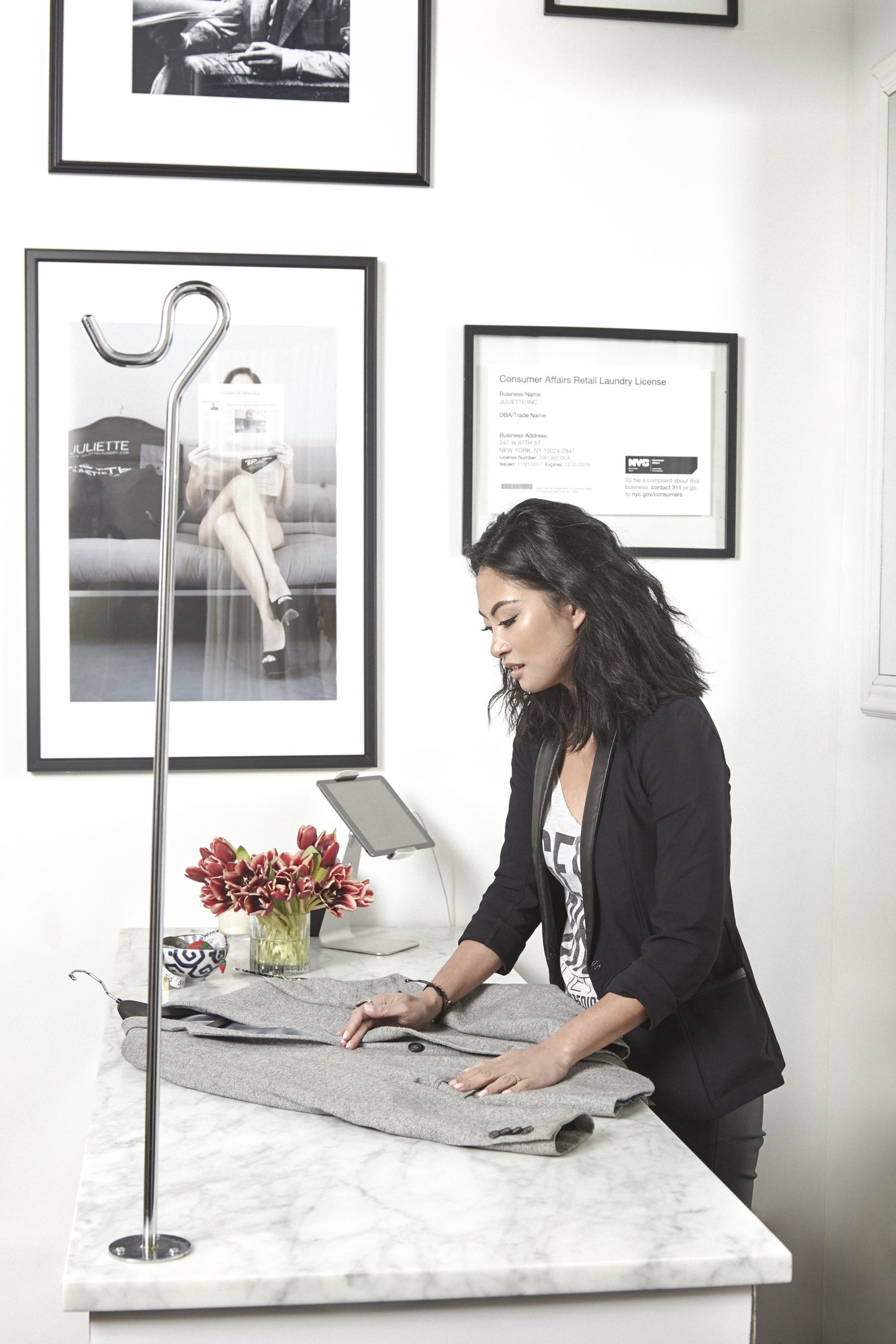
Dry cleaners became highly in demand as work attire transitioned from the factory to the office. Between 1940 and 1944, industrial production greatly expanded, providing more jobs and helping Americans come out of the Great Depression.
During this time, Trichloroethylene (TCE) was discovered and became the solvent for vapor degreasing.
But, today, as work-from-home and remote learning become more of the norm, the necessity of regular dry cleaning for the average person has decreased tremendously. Even with people returning to work, the work attire has become more casual than it was during the 1930s and 1940s, continuously changing since the 1950s.
In the 1950s, men typically sported a gray flannel suit with high-waisted pants, a white button-down shirt, striped tie, cufflinks and oxford shoes. Women wore slim-fitting tweed suits that went past the knee with matching cropped jackets.
Suits stayed in style for both men and women until the 1990s — with the exception of dresses and simple blouses with heeled pumps in the 1960s — where “casual Fridays” were offered as a “company perk.” Khakis and Levi’s Dockers became popular choices for men while jeans became more accepted for women in the office.
Silks, suits, leather and suede are types of fabric that should be dry cleaned, which caused the surge in the industry from the 1930s to the 1990s. In the 1990s, the average American instead wore jeans, khakis and simple shirts, not needing much service anymore.
JULIETTE lost 90 percent of its revenue during the COVID-19 lockdown in 2020. Dry cleaners, as a whole, lost about 80 percent of their revenue.
But JULIETTE survived.
The company survived because our dry cleaning and laundry services were always contactless — something traditional dry cleaners weren’t able to adapt to as quickly or efficiently, Balanzat explained.
During the lockdown period of the COVID-19 pandemic — which started in March 2020 — people didn’t want to leave their apartments nor homes. Other cleaners depended on the foot traffic, but JULIETTE just leaned into its strength, which was the app.
They saw an increase in app downloads and an influx of new customers.
Overall, there’s still a decrease in business in the industry—despite being worth billions in the U.S.
Something has to change. One of the options to target are prices, but usually when a dry cleaners raises its prices, it drives customers away.
Balanzat tried it once, but her customers protested. She began losing more than she was making.
Milk Prices Have Gone Up, But The Price To Dry Clean Your Pants Is The Same
But compared to your everyday necessities, dry cleaners’ prices have not changed.
Milk per gallon: 26 cents (1930s); 52 cents (1940s); 83 cents (1950s); $1 (1960s); $1.32 (1970s); $2.20 (1980s); $2.50 (1990s); $3.20 (2000s)
A dozen Eggs: 36 cents (1930s); 70 cents (1940s); 53 cents (1950s); 62 cents (1960s); 86 cents (1970s); $1 (1980s); 96 cents (1990s); $1.35 (2000s)
Gas per gallon: 20 cents (1930s); 18 cents (1940s); 27 cents (1950s); 31 cents (1960s); 36 cents (1970s); $1.19 (1980s); $1.15 (1990s); $1.51 (2000s)
Average American salary: $2,799 (1950s); $4,007 (1960s); $6,186 (1970s); $12,513 (1980s); $21,027 (1990s); $32,154 (2000s)
Minimum wage: 75 cents (1940s); $1 (1950s); $1.30 (1960s); $2.90 (1970s); $3.35 (1980s); $5.15 (1990s); $7.25 (2000s); $10 (2010s)
Some customers argue that dry cleaning is “expensive,” but the labor, technique, equipment and time put into reviving or maintaining someone’s clothes is expensive.
There are multiple people involved in the process of dry cleaning your suit or silk blouse.
There’s the counter person who itemizes garments; the spotter who removes the stain; cleaning which cleans the clothes in a machine; pressing which is hand ironing; finishing which is using a lint roller and cutting loose threads; packaging which puts the clothes on a black velvet hanger and black garment bag; and, finally, the delivery.
At JULIETTE, they go through this entire process, and, pre-pandemic, they’d deliver your clothes back to you within 24 hours.
They once did a same-day turn around for famous model Gigi Hadid.
She had a dramatic, caped blue jumpsuit to wear for Variety’s Power of Women event, but it was tarnished before anyone could realize. The piece hung on a rack, but the bottom had been dragging on the floor and collected dust.
“I revitalized the jumpsuit within a few hours, handing it off with the signature black velvet hanger and black garment bag,” Balanzat said.
Fundraising Women In Technology
But JULIETTE can’t achieve this high-quality service without funds. It takes money to make money.
But the reality for many women, including Balanzat, has been easier said than done.
Facebook, founded by Mark Zuckerberg, launched in February 2004. Its market cap as of August is $1.21 trillion. Google, founded by Larry Page and Sergey Brin, was launched in September 1998. Its market value is $1.622 trillion as of June. Uber, founded by Travis Kalanick and Garrett Camp, released in 2011. Its net worth is $15 billion as of May.
Of all venture capital — a private equity investor that funds startup ventures or small companies — about 2.3 percent goes to women. Then, of that, less than 0.2 percent goes to women of color.
A report from RateMyInvestor showed startups funded by the top venture capitalist were nearly 90 percent male with 72 percent of the founders being White.
Successful companies like Facebook, Uber, Amazon have lost money along the way. But if Balanzat makes the wrong move, she loses everything, she said. This is a reality for many women, especially women of color.
The Future is Now
Still, although a low percentage of aid goes to immigrants and women like myself, JULIETTE is determined to disrupt the industry and become the category leader.
Just this October, JULIETTE beat its 2019 revenue numbers, bouncing back from the COVID-19 lockdown where they lost 90 percent of their revenue.
JULIETTE boasts that through the app and their technology, they save New Yorkers — who are notorious for being busy — the time and hassle from doing laundry and dry cleaning.
Online, you can request a pick up with the tap of a button. They pick up from Monday to Sunday between 6 p.m. to 9 p.m. ET. Offline, you can visit their shoppe and bring in your laundry at 247 West 87th Street, New York, New York. They’re open Monday to Saturday 8 a.m. to 5 p.m and Sundays 11:30 a.m. to 4 p.m.
There’s a quote that Balanzat thinks describes the dry cleaning industry and JULIETTE’s mission best: “the best way to predict the future is to create it.”

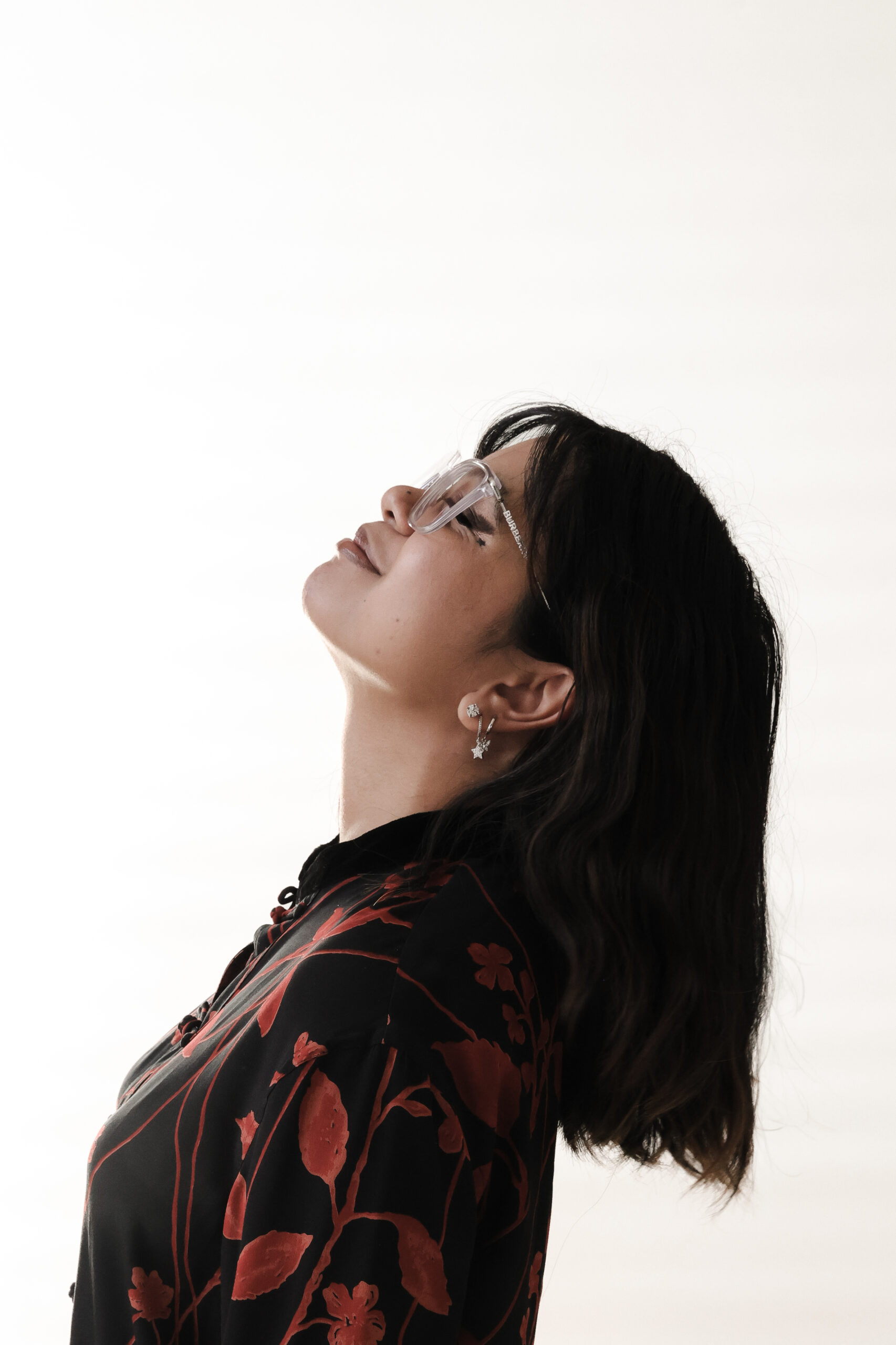
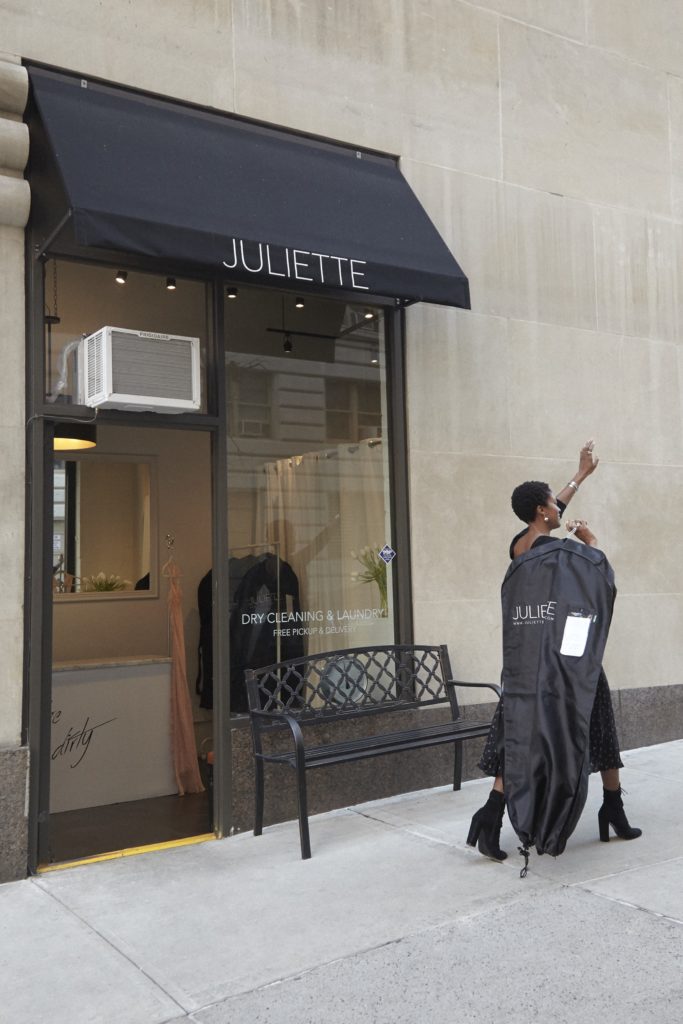





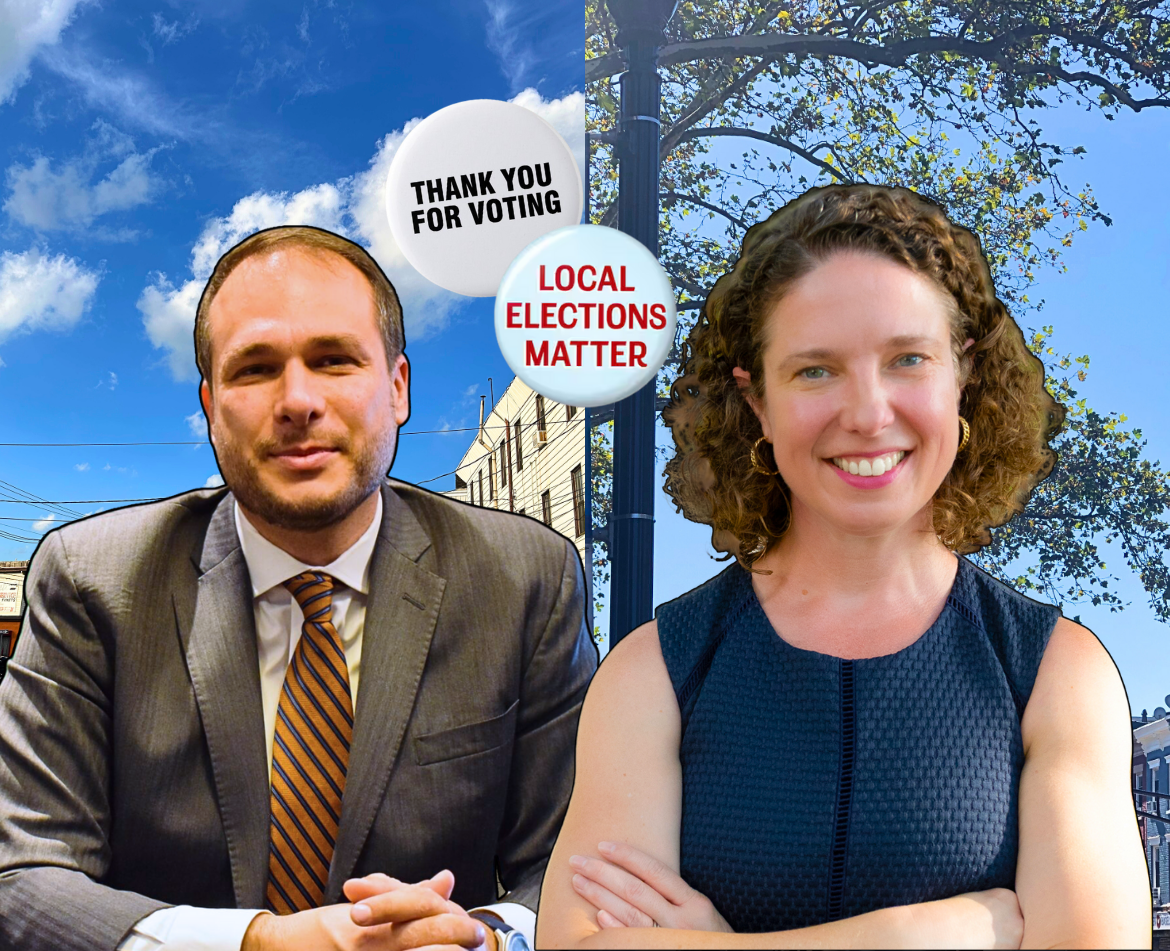






One Response
I really like your writing style, excellent information, appreciate it for putting up : D.